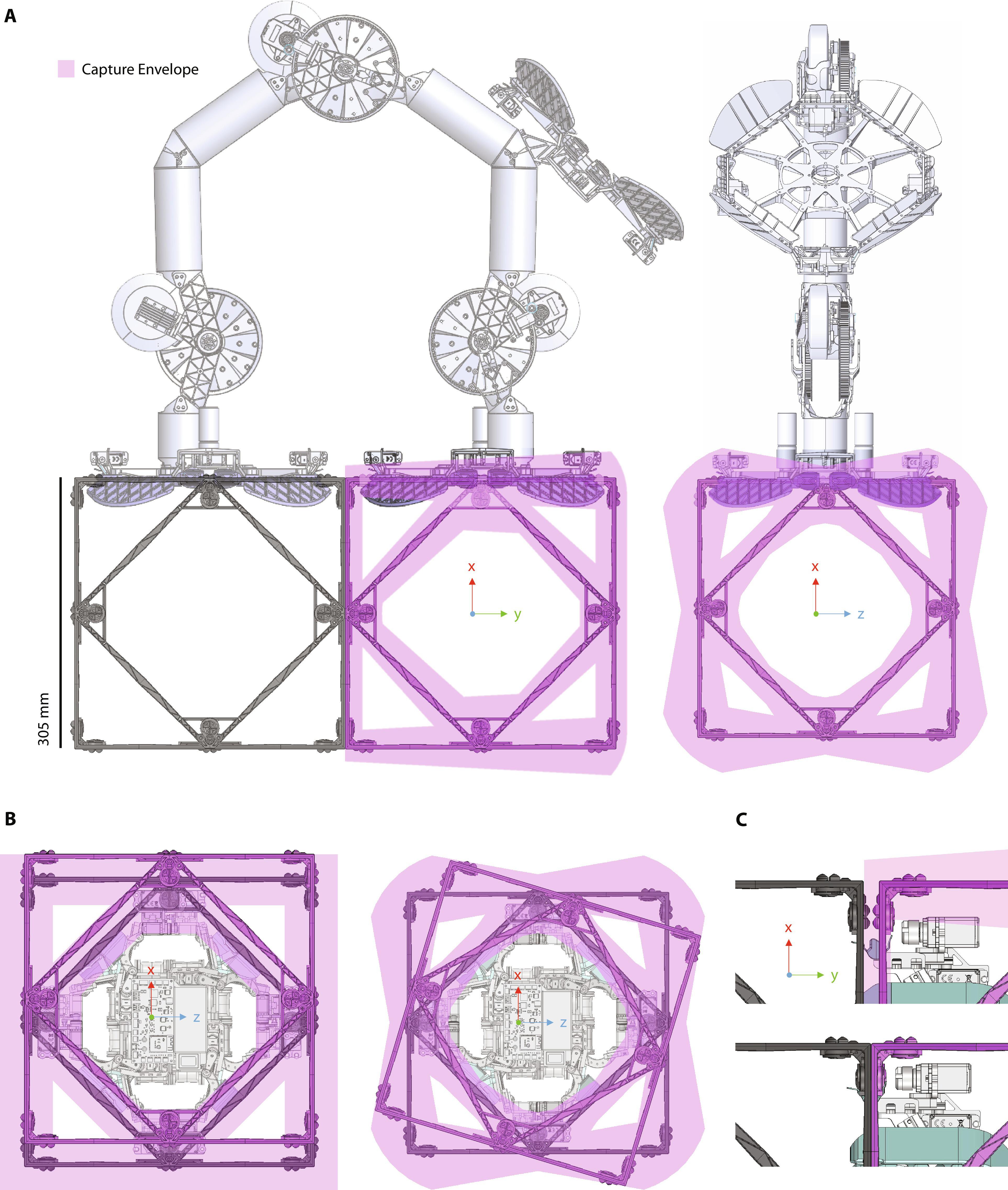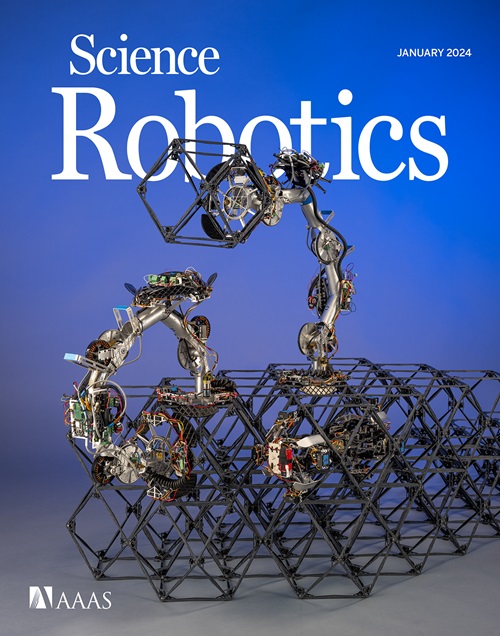超轻、超强、可自编程的机械超材料。
IF 26.1
1区 计算机科学
Q1 ROBOTICS
引用次数: 0
摘要
人们很早就设想了多功能可编程材料,这种材料可以重新配置自身,以适应自适应基础设施、太空探索、灾难响应等领域不断变化的使用情况。我们介绍了一种机器人结构系统,作为可编程物质的一种实现方式,其机械性能和规模与传统的高性能材料和桁架系统相当。纤维增强复合材料桁架式构件形成了坚固、刚硬、轻质的晶格结构,成为机械超材料。两种类型的移动机器人在系统的外表面和内部运行,利用固有的晶格周期性进行索引和计量,执行运输、放置和可逆紧固。利用可编程物质算法来实现尺寸和复杂性的可扩展性,这种系统设计能够通过简单的机器人实现大型结构的稳健集体自动装配和重新配置。我们介绍了该系统的设计、256 个单元的组装演示和晶格机械测试的实验结果,以及拆卸和重新配置演示。组装后的结构晶格材料具有超轻的质量密度(每立方厘米 0.0103 克)和与重量相当的高强度和刚度(分别为 11.38 千帕斯卡和 1.1129 兆帕斯卡),这种材料的性能领域适合空间结构等应用。该系统具有简单的机器人和结构、较高的特定质量结构性能和极具竞争力的吞吐量,展示了自重构自主超材料在不同应用领域的潜力。本文章由计算机程序翻译,如有差异,请以英文原文为准。

Ultralight, strong, and self-reprogrammable mechanical metamaterials
Versatile programmable materials have long been envisioned that can reconfigure themselves to adapt to changing use cases in adaptive infrastructure, space exploration, disaster response, and more. We introduce a robotic structural system as an implementation of programmable matter, with mechanical performance and scale on par with conventional high-performance materials and truss systems. Fiber-reinforced composite truss-like building blocks form strong, stiff, and lightweight lattice structures as mechanical metamaterials. Two types of mobile robots operate over the exterior surface and through the interior of the system, performing transport, placement, and reversible fastening using the intrinsic lattice periodicity for indexing and metrology. Leveraging programmable matter algorithms to achieve scalability in size and complexity, this system design enables robust collective automated assembly and reconfiguration of large structures with simple robots. We describe the system design and experimental results from a 256–unit cell assembly demonstration and lattice mechanical testing, as well as a demonstration of disassembly and reconfiguration. The assembled structural lattice material exhibits ultralight mass density (0.0103 grams per cubic centimeter) with high strength and stiffness for its weight ( 11.38 kilopascals and 1.1129 megapascals, respectively), a material performance realm appropriate for applications like space structures. With simple robots and structure, high mass-specific structural performance, and competitive throughput, this system demonstrates the potential for self-reconfiguring autonomous metamaterials for diverse applications.
求助全文
通过发布文献求助,成功后即可免费获取论文全文。
去求助
来源期刊

Science Robotics
Mathematics-Control and Optimization
CiteScore
30.60
自引率
2.80%
发文量
83
期刊介绍:
Science Robotics publishes original, peer-reviewed, science- or engineering-based research articles that advance the field of robotics. The journal also features editor-commissioned Reviews. An international team of academic editors holds Science Robotics articles to the same high-quality standard that is the hallmark of the Science family of journals.
Sub-topics include: actuators, advanced materials, artificial Intelligence, autonomous vehicles, bio-inspired design, exoskeletons, fabrication, field robotics, human-robot interaction, humanoids, industrial robotics, kinematics, machine learning, material science, medical technology, motion planning and control, micro- and nano-robotics, multi-robot control, sensors, service robotics, social and ethical issues, soft robotics, and space, planetary and undersea exploration.
 求助内容:
求助内容: 应助结果提醒方式:
应助结果提醒方式:


